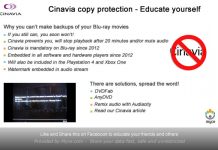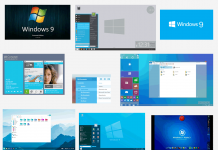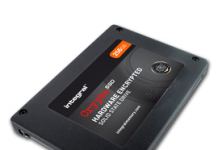Copyright 2001 CD-RW.ORG
Click for lowest prices in CD-R media
LAME pushes MP3s further with the upcoming 3.89
WARNING: LAME 3.89 is at alpha stage. Even though LAME alphas do not crash or cause similar trouble, their audio features may change from day to day. Last approved version is LAME 3.88b.
LAME, the ultimate MP3 encoder, brought MP3 to a whole new level of quality with the 3.88 version. It took months for LAME to update from 3.87 to 3.88, but since the 3.88 the development pace has been furious. Biggest changes implemented so far is the new default VBR mode which provides about 100% speed improvement and improved Joint Stereo algorithms.
For some reason the MP3 scene likes to stick with the old Fraunhofer encoder with 192kbps/stereo settings. This amazes me since LAME encoder has outperformed the Fraunhofer ages ago, somewhere around the 3.6 - 3.7 versions-that is well over a year ago. Equally amazing is that the scene continues to stick with 192kbps encoding, while all modern encoders utilize VBR for quality improvements. The anti-VBR attitude must originate from the days of the XING encoder, which did produce terrible results. But since then times have changes and if you look at the LAME Encoder changelog you'll realise the amount of work put to the optimisation of this fabulous codec. With LAME VBR it is possible to achieve virtually perfect quality with average bitrates around 170-210 kbps.
Now back to the version 3.89
The new VBR routines of 3.89 are 2x faster than algorithms used in the previous versions. However it's known to have some quality issues vs. the old routines, but currently plenty of development effort is put to the quality of the new VBR. And note that the new VBR already produces quality over all other encoders, but the older (slower) routines may just be even tiny bit better. Based on my personal tests, the new VBR is already at very high level of quality and shouldn't produce problems in normal use. However, high-end extremists may want to stick with old VBR that is still available also.
The MP3 scene likes to use stereo encoding, while Joint Stereo provides significant quality improvements. Even the Fraunhofer recommends Joint Stereo below 256kbps bitrates.
I'll try to explain Joint Stereo very briefly. Basically it looks for signals that are identical in the left and right channel and if it finds any they are encoded as mono. This means that 50% bits are saved for the mono encoded signals and these bits are used to improve the encoding accuracy (very simplified explanation). If think rap music for example, most of the music is mono: the beat, the bass tunes, most of the vocals. Then there are some instruments & effects that come from left or right speaker. When you think of this, you can understand how much bits can be saved and encoding improved with Joint Stereo.
The JS is not problem free though. No algorithm is perfect and it may make mistakes. Once again the LAME Encoder has the most accurate JS available and the 3.89 shows significant changes again. If you use Guerillasoft's neat EncSpot ( www.guerillasoft.com ) , you'll see that the 3.89 version uses more strict stereo encoded frames than older LAME revisions. There is no documentation yet about the changes, but this clearly implies to ever higher accuracy of the JS algorithms.
Currently LAME Joint Stereo should be used to encode any studio recorded material. Studio recording have usually very strict stereo channel mastering, which means that sounds come clearly from both of the speakers, or strongly from the left or right. It's unlikely that the JS algorithms would make an error when encoding studio material. However, with music that is recorded in open space with multiple microphones (classical, some acoustic guitar, some live recordings..) stereo encoding may be a better choice, since in such recording the sounds don't come strictly form left, right or centre, but the music 'lives" somewhere in between the two channels. This may confuse the JS algorithms.
How to encode?
LAMEs best and the worst feature is the almost unlimited amount of different settings and options. Newbies will find it confusing, but experts love the possibilities to tweak the quality to exactly meet their needs at the moment. One can make special lower quality settings for his MP3 walkman and higher quality settings for his Hi-Fi equipment.
To play it safe and get excellent quality VBR MP3s you should use LAME 3.88b and the thoroughly tested settings:
--r3mix -b 128
These settings can easily be added to most of the CD rippers, while Exact Audio Copy is strongly recommended for best quality. Bitrates with these settings vary a lot: rap may encode at the average of 160kbps and heavy metal around 250kbps. If you listen music cross over, you should get an average below 200kbps in your encodings.
If you want to goof around with the new 3.89 alpha features, then you may try parameters like:
--adapt-thres-type 2 -V 1 -q 0 -m j --lowpass 19.5 --athtype 3
You may want to try V values of 0 or 2 and athtype of 2. These parameters should give you similar quality than the 3.88 settings above, but with 2x speed improvement. The bitrates with these settings vary less than with 3.88b, and they move around 170-210 kbps. Keep in mind that the new VBR is NOT completely tested or even finished yet.
It's impossible to write a complete LAME manual or tutorial within one article. Therefore here are some references you should look at for more information:
- http://cd-rw.org/forum
The highest quality MP3 community in the WWW. Many LAME developers and other experts are around. Also CD-R, DVD and other issues. - http://www.r3mix.net
The original LAME-site, with very good tutorials and quality analysis. - http://www.hot.ee/smpman/mp3/
Good place to download latest LAME versions - http://www.mp3dev.org/mp3/
The LAME homepage.
Copyright 2001 CD-RW.ORG










